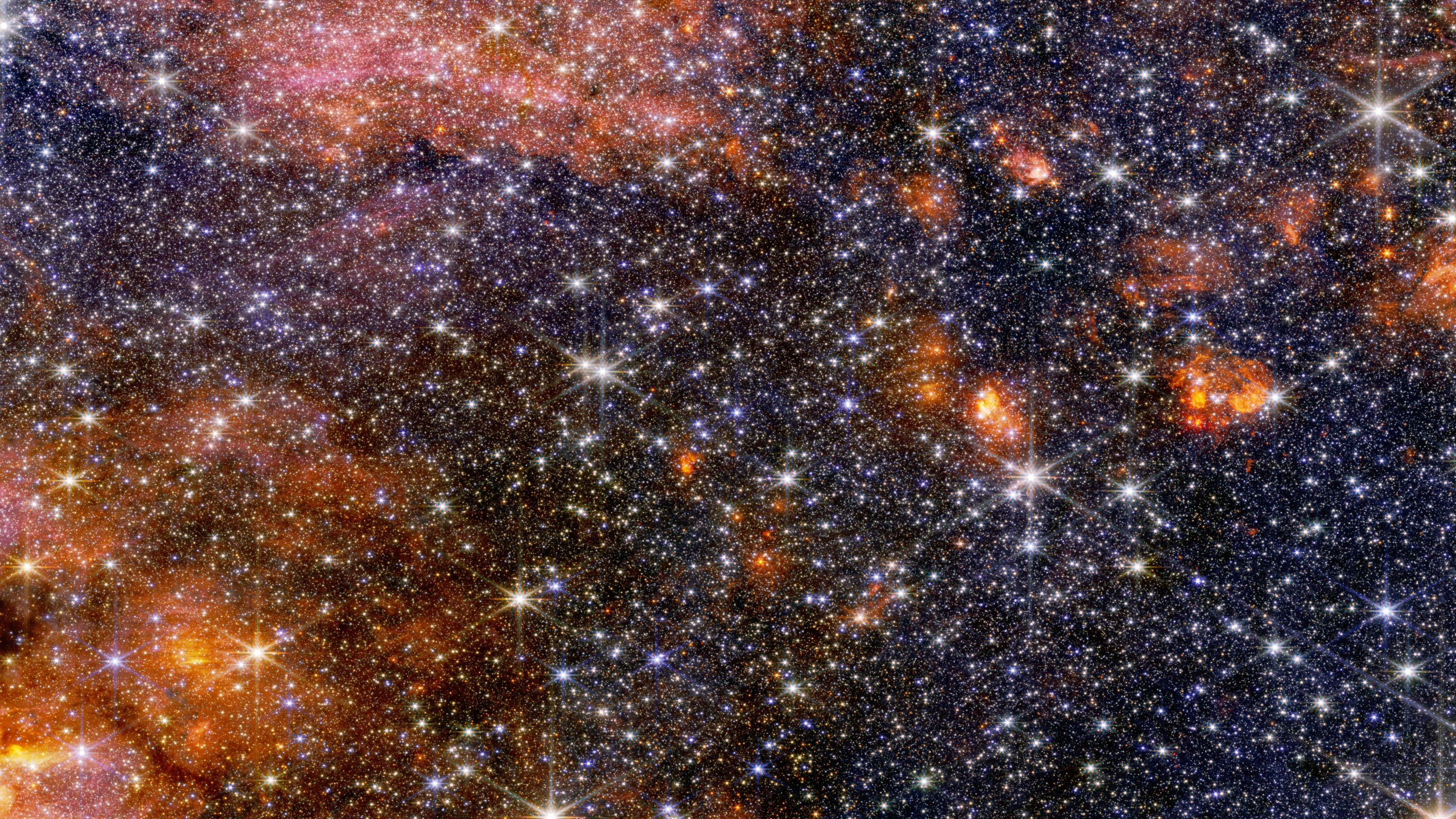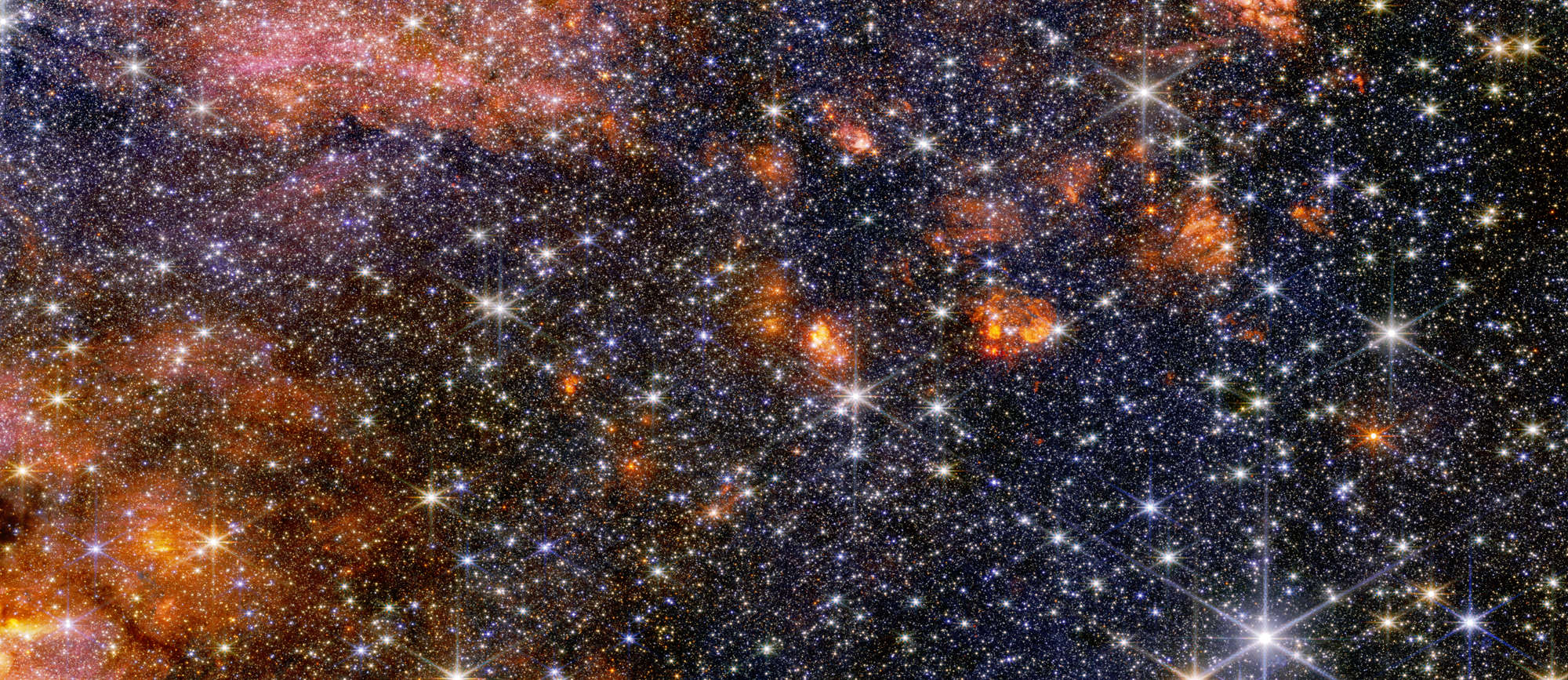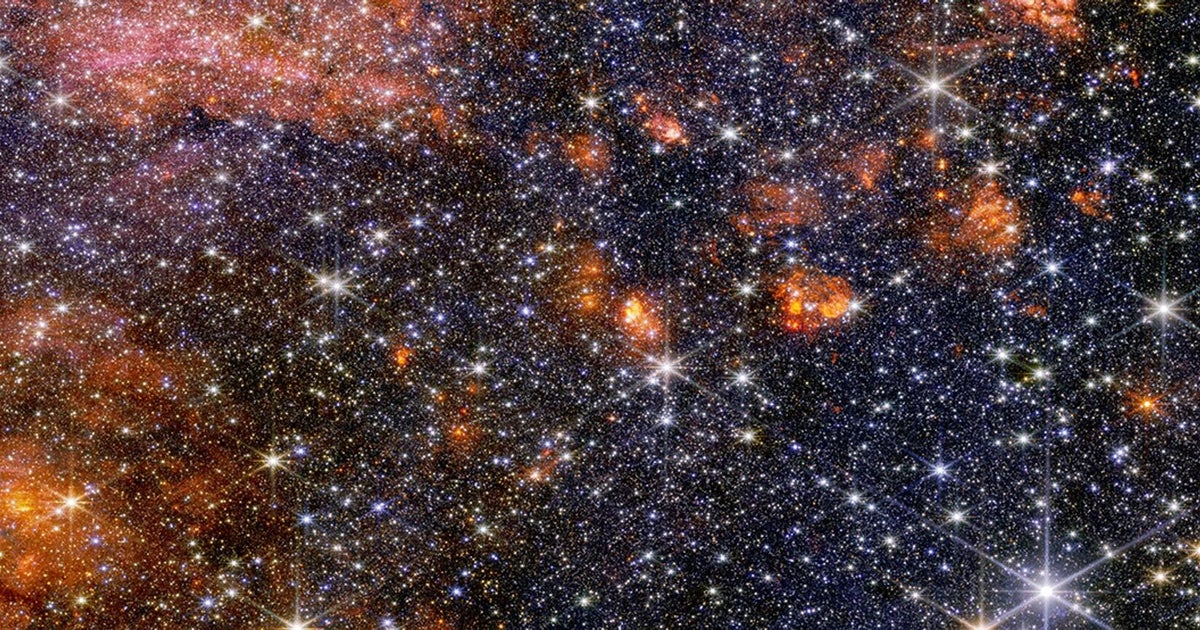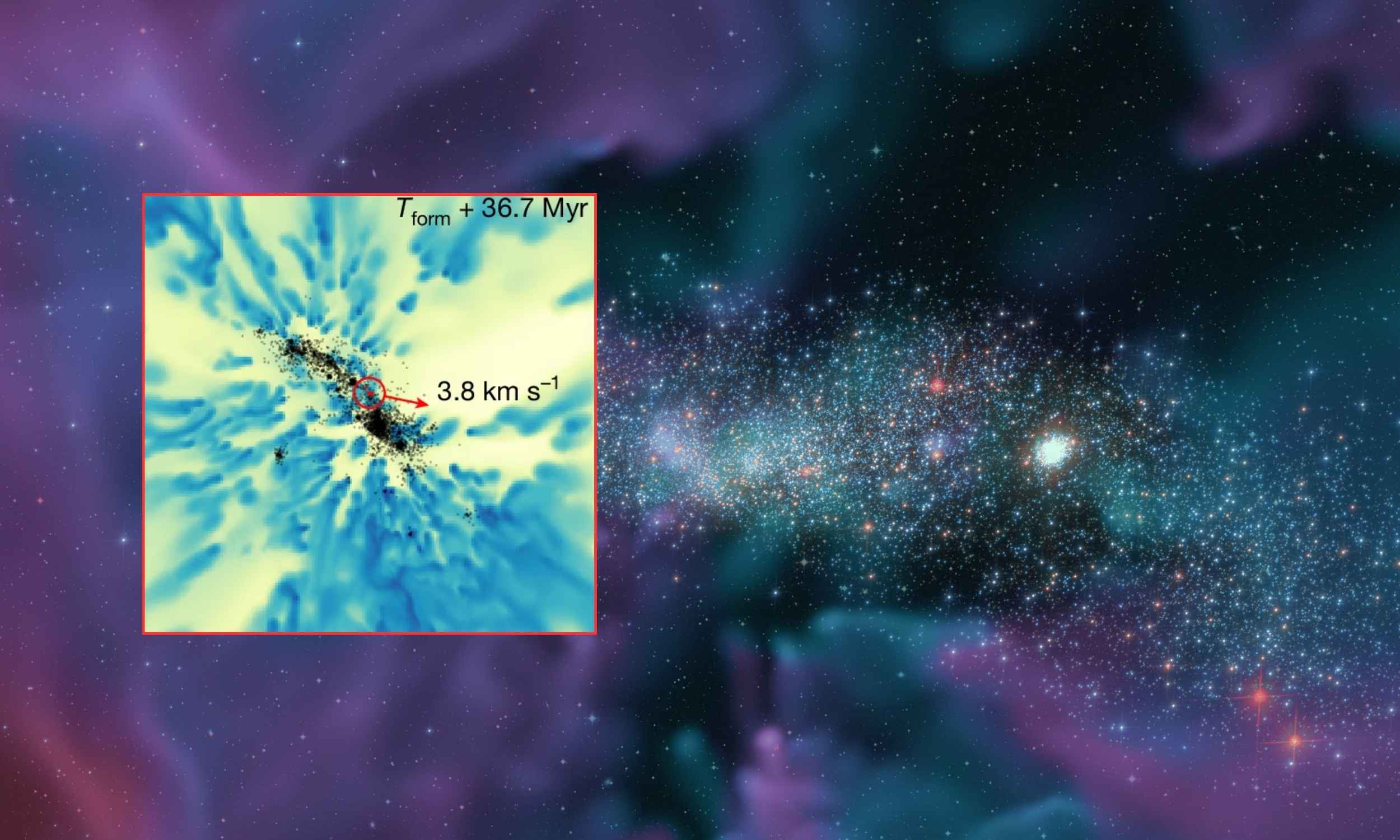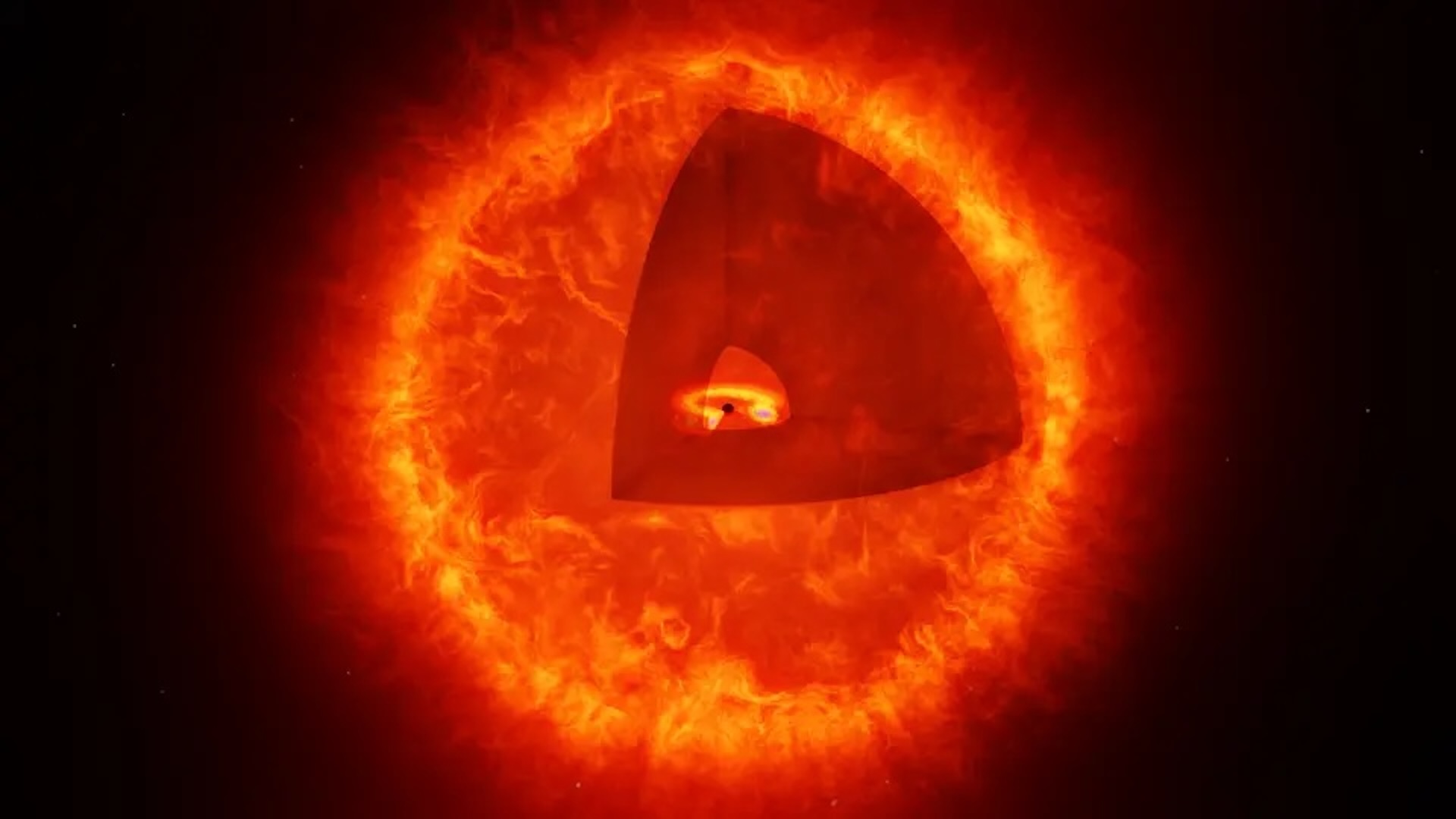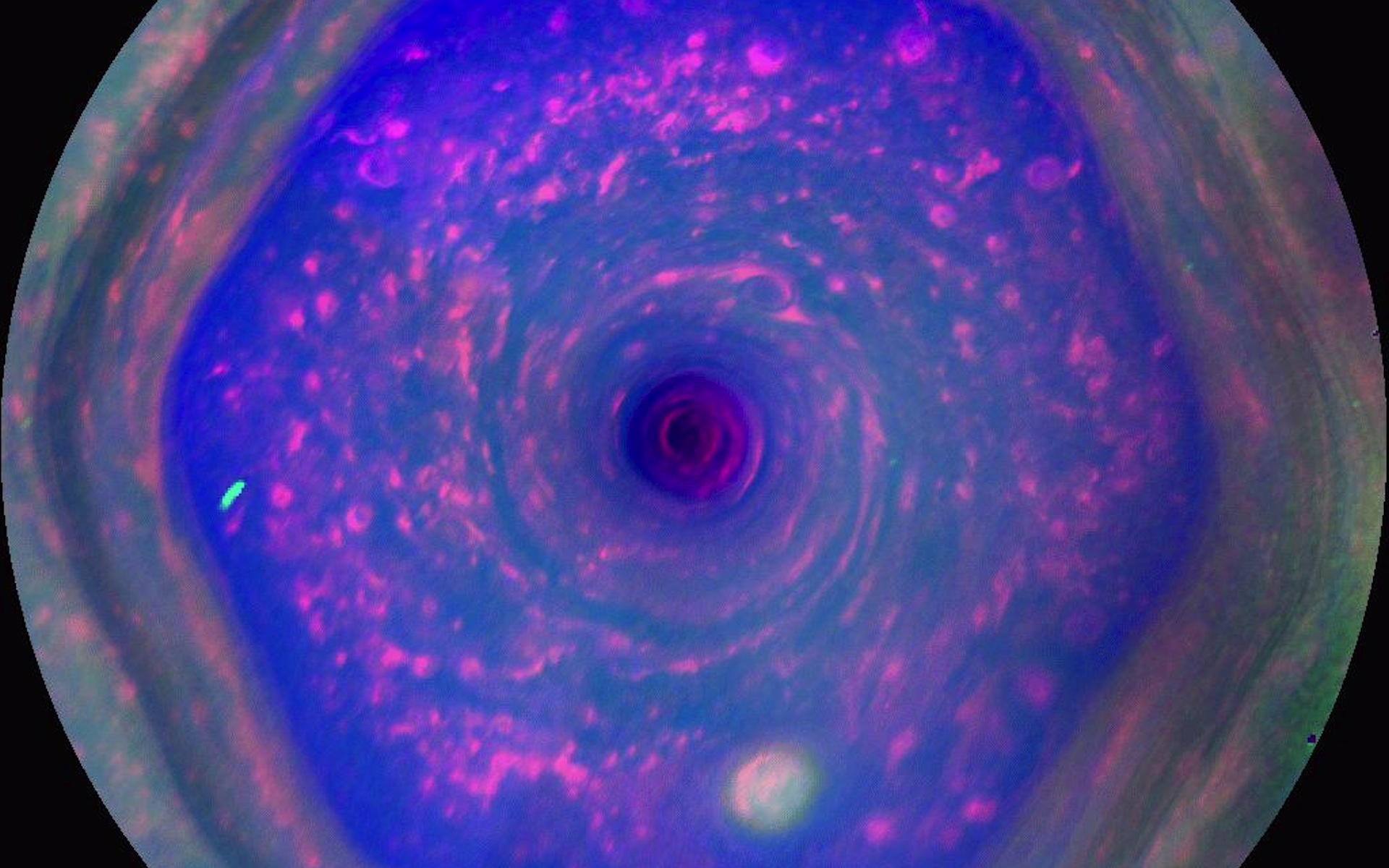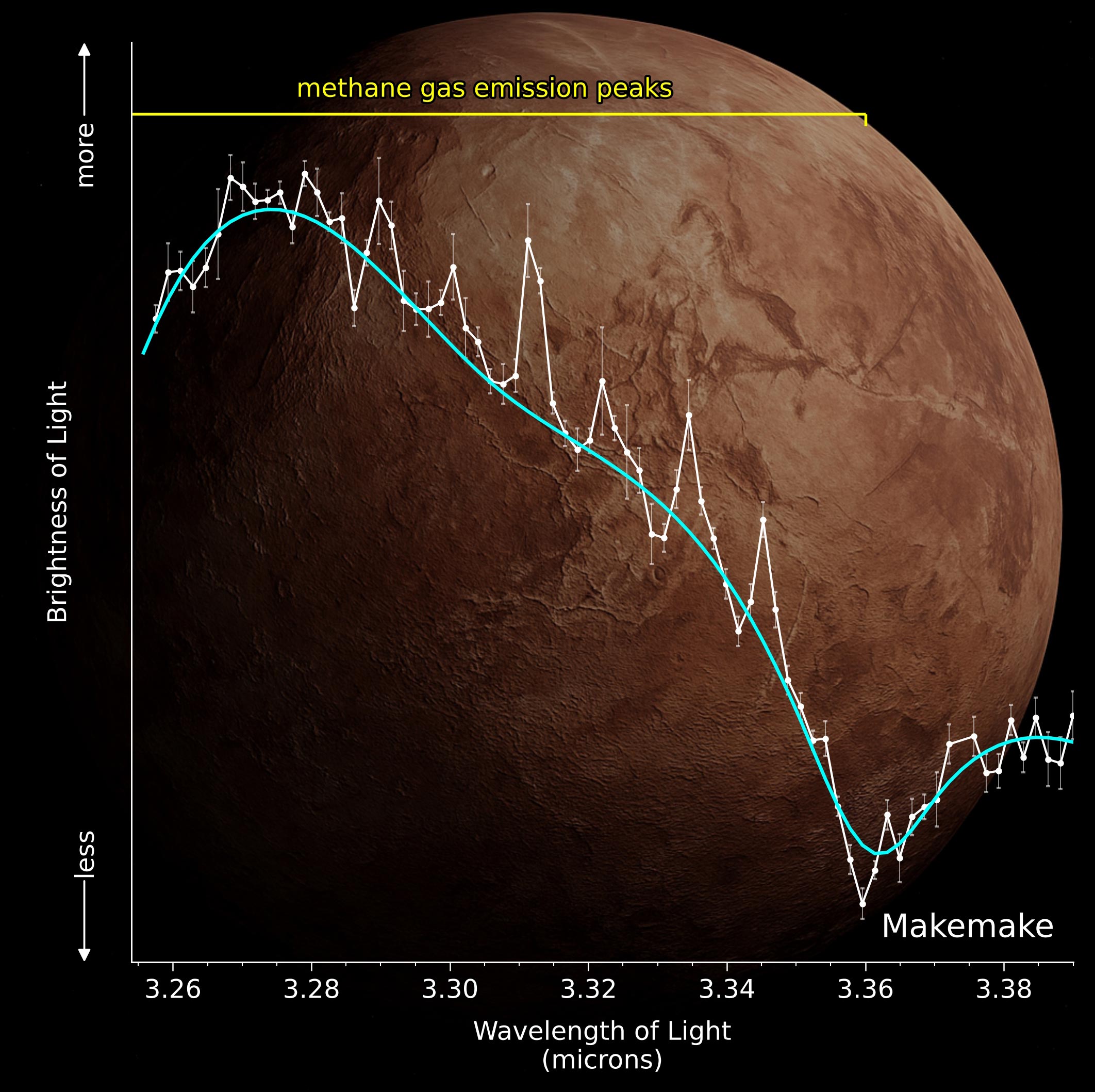Quick facts What it is: Sagittarius B2 (Sgr B2) molecular cloud Where it is: 25,000 light-years from Earth in the constellation Sagittarius When it was shared: Sept. 24, 2025 Why it’s so special: Stars in the Milky Way galaxy are born in huge molecular clouds. The most massive is Sagittarius B2, which is just a few hundred light-years from our …
Read More »Tag Archives: Webb
James Webb Space Telescope peers deep into the heart of star formation in our Milky Way galaxy
A maelstrom of star formation close to the center of our galaxy has been revealed in two different wavelengths by the James Webb Space Telescope (JWST), its beautiful images highlighting the intensity of star-birth in the region and deepening the mystery of why star formation at the very heart of our galaxy is so sluggish. Sagittarius B2 is a dense …
Read More »Unprecedented views of largest star-forming region in our galaxy captured by Webb telescope
NASA’s powerful James Webb Space telescope has revealed a colorful spread of stars and cosmic dust in the Milky Way’s most active star-forming region. The telescope was studying Sagittarius B2, a massive molecular cloud, NASA said in a news release. The region is just a few hundred light-years from the supermassive black hole at the center of the Milky Way …
Read More »The James Webb telescope may have discovered a brand new class of cosmic object: the black hole star
When you buy through links on our articles, Future and its syndication partners may earn a commission. An illustration of a black hole star — a potentially new class of cosmic object with a feeding black hole at its center, and a dense cocoon of turbulent gas surrounding it like a star. | Credit: MPIA/HdA/T. Müller/A. de Graaff Astronomers have …
Read More »Webb could confirm a new type of star system present in our galaxy
Astronomers have argued for centuries about how the oldest, tightest star swarms came to be. A new study uses precise computer models to show how this new type of star system might form. The findings point to a new class of objects that could be hiding near the Milky Way today. These star systems are called globular clusters …
Read More »‘Universe breakers’ discovered by James Webb space telescope may be a new class of cosmic object: the black hole star
Astronomers have discovered a new object that could help shed light on mysterious “little red dots” that were first spotted by the James Webb Space Telescope (JWST) in 2022. The newfound object, dubbed “the Cliff,” suggests that the little red dots represent a totally new class of cosmic objects known as a “black hole star,” the researchers say. This newly …
Read More »NASA’s Webb Explores Largest Star-Forming Cloud in Milky Way
NASA’s James Webb Space Telescope has revealed a colorful array of massive stars and glowing cosmic dust in the Sagittarius B2 molecular cloud, the most massive and active star-forming region in our Milky Way galaxy. “Webb’s powerful infrared instruments provide detail we’ve never been able to see before, which will help us to understand some of the still-elusive mysteries of …
Read More »“These Features Were Completely Unexpected”: Webb Telescope Detects Unexplained ‘Structures’ in Saturn’s Atmosphere
Northumbria University scientists using the sensitive instruments on board the James Webb Space Telescope (JWST) have detected several mysterious structures orbiting at different altitudes above Saturn that they cannot explain. A statement announcing the unexpected discoveries said the unexplained features, which included “a series of dark, bead-like features embedded in bright auroral halos” in the ionosphere and an “asymmetric star-shaped …
Read More »‘Completely unexplained’: James Webb telescope finds strange ‘dark beads’ in Saturn’s atmosphere
The James Webb Space Telescope has discovered strange “dark beads “above a four-armed star pattern in Saturn’s atmosphere. The surprising structures are unlike anything scientists have seen before, and they’re not sure what they are. The unusual features were discovered by the James Webb Space Telescope‘s (JWST’s) Near Infrared Spectrograph (NIRSpec) as it peered into the gas giant’s atmosphere above …
Read More »Webb Telescope Detects Gas on Distant Dwarf Planet Makemake for the First Time
An SwRI-led team used Webb telescope observations (white) to detect methane gas on the distant dwarf planet Makemake. Sharp emission peaks near 3.3 microns reveal methane in the gas phase above Makemake’s surface. A continuum model (cyan) is overlaid for comparison; the gas emission peaks are identified where the observed spectrum rises above the continuum. An artistic rendering of Makemake’s …
Read More »